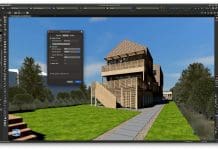The cost of constructing a typical hospital today is twice what it was in 2002. Can BIM help? Hi-Tech iSolutions LLP ‘s Bhushan Avsatthi discusses
Apart from being different, general contractors find healthcare building construction projects to be the grimmest ones too because of technology upgrades, their unpredictability, the large area and inconvenience in maintaining unhindered site activities. Most EPC firms would rather build something other than refurbishing or renovating an existing healthcare facility or even construct it from scratch.
Today, hardly any AEC industry professional is aloof from the acronym Building Information Modeling (BIM). BIM has found its usefulness for almost every professional, be it a general contractor for project bids, architects for 3D visualisation, structural engineers for steel and design detailing, and MEP engineers analysing building element clash detections during the design stage. Moving on to the construction stage and maintenance, BIM aids site engineers for logistics and construction sequencing and facility managers for post construction and life cycle management of the facility.
Along with multi-disciplinary building construction project applications, BIM has found its place across a variety of construction projects such as public infrastructure development, the hospitality industry, commercial constructions, or healthcare development. However, in spite of using the same BIM tools for several different combinations of discipline and project variety, their implementation varies as a consequence of project specific requirements and the individual mannerisms by which designs collaborate.
What causes BIM implementation to be more complex in healthcare construction?
Healthcare facilities, apart from the obvious hygiene and construction complexities, also face challenges from governmental jurisdiction about reimbursement, requirements of other regulatory agencies, advancements of medical equipment and clinical procedures, and increasing patient demands. These factors not only drive construction projects but also make it difficult since they may change during ongoing construction making the process even more complex.
The technicalities and logistics management of construction projects add to the challenges encountered, and in the construction of the multi-speciality hospital, there are hundreds of engineers and architects involved who may belong to multiple organisations. The collaboration of these professions in an environment like BIM enables a holistic approach to the entire project. Although BIM enables a shared work environment, the design challenge of creating several hundreds of building product objects in 3D models is still immense.
Divide and construct: methods for healthcare construction projects
A common method that AEC industry experts adopt is to divide the entire building design into several components and proceed from design to final construction and operation. Such an approach enables professionals to construct efficiently by giving appropriate attention to each component.
The Design phase
No matter how complex or grandiose the built area is, the fact remains that it will operate as a single facility. To minimise the complexity of designs and let them evolve proficiently, the most common approach is to segregate the entire built area into several smaller independent units and let them act as stand-alone projects. When BIM is implemented separately for each of these units, contractors and sub-contractors are empowered to march ahead with proper planning. Additionally, to ensure a clash free design model when viewed holistically, each of these independent BIM models can be converted to a single federated BIM model before the construction starts.
The Construction phase
Once the federated BIM model is ready, the construction sequencing is set using 4D BIM to monitor the construction progress against the proposed schedule. It enables not only the timely construction but also ensures the proper installation of various MEP components, prefabricated structural elements and other building product fixtures through real-time links with 3D models. Such a feature empowers contractors to reduce waste by almost 10-12%.
4D BIM essentially facilitates the capturing and setting of sequencing data and can manage and maintain a report of all the activities in a highly efficient manner. The possibility of modular construction with the prefabrication of various elements can help to speed up construction delivery. BIM enabled digitisation in construction has helped to bring efficiencies and revolutionised various onsite construction activities.
The Operational phase
Individual stakeholders are interested to know how the facility will function and operate once the construction is finished. Especially in the case of public facilities, those interested in construction are also interested in how well the facility will be operated and maintained. With BIM, facility managers see opportunities in accessing information from a central database and a reliable source of information.
In fact, it’s not only operation and maintenance that improves. Any expansion plans for a hospital facility can easily be undertaken once the as-built information is accessible so that plans can be implemented efficiently.
Constructing a healthcare facility is a challenging task, with several developers now changing their methodology of construction. Various tools and approaches have come into play to make construction schedules less painful to site engineers and contractors to increase efficiency. BIM solutions can enable a smooth construction path which will result in fewer costs.
It is a fact that BIM implementation is different and has unique challenges for each construction project undertaken. But if done in the correct manner, it ensures safe and efficient results and can even create design wonders.
Bhushan Avsatthi
Associate Director
Hi-Tech iSolutions LLP













